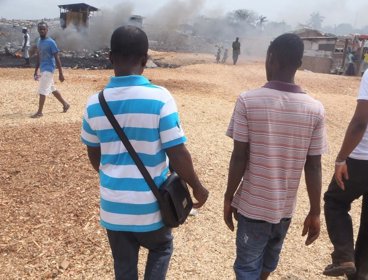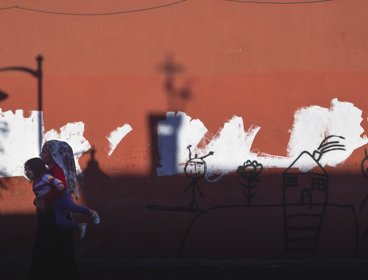By Michael Leyshon, University of Exeter
One of the greatest challenges in researching the lives of rural youth is tackling the powerful idea that rural places are ideal places in which to be a child or younger person. When one thinks of the countryside, we conjure up images of rolling green countryside where field boundaries and farm buildings structure a landscape in which wildlife is ordered and that everything is in the right place. Churches and manor house, so symbolic of power, are nestled on hillsides above villages, hewn from local materials that appear to have organically grown out of the landscape. We imagine rural communities as thriving, where everyone knows and cares for each other. Residents shop in a local store and socialise in an ancient but welcoming pub. All connections to the outside world of modernity, hustle and bustle are conspicuously absent. This evocation of a pastoral idyll, where people’s needs, hopes and aspirations are played out in a green and pleasant land, is still surprisingly prevalent among many policy makers, the media, and the business sector. They carelessly portray rural areas as if not prosperous, then abundant with social capital and lifestyle benefits, with few problems that need addressing. As geographers, we have an important role to play in challenging such misrepresentations.
The countryside is posited as a good, safe place to raise children. The environment is believed to enhance their wellbeing. Services within villages support this idea - playgrounds, parks and village schools are designed for children. Yet as my research has argued, as young people grow up they become increasingly out of place within their communities. They are seen to be deviant and dangerous; they hang out in the wrong places, they listen to the wrong music, wear the wrong clothes, do the wrong activities, or drive the wrong cars. This misrepresentation of rural youth has persisted for a long time and has resulted in a range of regulatory practices within villages that seek to control their lives, for example, though banning them from certain spaces or altering spaces so they cannot skateboard or hangout together. To make matters worse, the austerity measures of the past decade have put pressure on local authorities to make tough financial decisions. Non-statutory services such as youth clubs have been closed in rural areas. Charities and the voluntary sector now provide the only youth work in rural communities, which results in a postcode lottery of service provision.
There are many villages I have worked in where organisations like the Scouts and Young Farmers or often church groups provide a youth club or a bus shelter (often with no bus stop) as places for young people to gather, but there remain great swathes of the countryside where youth services are either absent or services are uncoordinated and intermittent. As a youth worker for a charity recently said to me “there can be a lot going on and I think part of what we’re trying to do is join it all up. It does tend to create a wonderful, glorious mess, chaos”. This incoherence results in the lives of rural youth being in danger of neglect just at a time when young people need support as they adjust out of Covid-19 lockdowns and into what is commonly understood as a ‘transition’ to adulthood.
Not all young people who live in the countryside have supportive families or are afforded a childhood or have personal transport or indeed have access to ready cash. Although the veneer of rural gentrification presents a picture of unproblematic childhoods, the voices of those young people who struggle to live their lives are drowned out in the popular imaginary of the countryside. The reality of rural living for most rural youth means that they will grow up and move away as they have little chance of finding a job or an affordable home in their communities. Their futures are quite bleak: rural careers are in decline, training opportunities are difficult to access, rural homes far exceed a young person’s earnings, and the cost of living in the countryside is soaring.
My research with rural youth offers a variety of different opinions on their lives; indeed I have showed that they are a diverse group who do not experience the same challenges or have the same opportunities. However, there are several common themes that illustrate the range of unique challenges they face. Rural youth are often positioned as being disadvantaged and marginalised as they face challenges such as social isolation, poverty, limited access to training and job opportunities, poor infrastructure, a lack of youth facilities, and lower levels of health and wellbeing. Their cultural identity is strongly rooted in the countryside and I have explored the ways in which they negotiate and maintain their cultural heritage in the face of societal changes. My work emphasises how rural youth are resilient and resourceful and how they can overcome obstacles through collective action. Lastly, my research has attempted to empower rural youth by focusing on the ways in which they can actively participate in decision-making and have a voice in shaping their communities and the world around them. Rural youth invariably have strong ties to their communities and hold the potential for leadership and entrepreneurship within future communities.
My concerns are grounded in an argument about how we care for and envision a future for young people. It’s about enabling them to live in thriving rural communities through paying attention to their concerns and needs. They are the future of our rural places and we need to enable them to become the best of us. As a young women summed up in her ethnographic diary, “I am not ill, I don’t need a doctor, stop telling me something is wrong with me or making me feel that there is something wrong. I need space, I need time and I need human connection. So don’t leave me alone or let me be or treat me with your remedies. Gather me up into your world”.

Waiting at the train station, Michael Leyshon.
Some recommendations for others working with young people in rural areas:
-
We need to undertake more research that rethinks young people’s place in our communities. What are our hopes and aspirations for them and how can we we address the challenges they are facing around careers, housing, and wellbeing?
-
Future research needs to be conducted in ways that are culturally credible to young people. We need new methods and ways of writing that are engaging to young people and represent the stories of their lives.
How to cite
Leyshon, M. (2023) Young people growing up in the countryside. Working with voluntary and community groups. Royal Geographical Society (with IBG) Guide. Available at: https://doi.org/10.55203/CZNG4869
About this guide
Working with voluntary and community organisations for some is a very important way to do geography. These organisation come in various shapes and sizes and may also often be referred to as the third sector, the voluntary sector, not-for-profit organisations, community groups or the civic sector. In this guide, we share the experiences of researchers doing geography in collaboration with community and voluntary organisations. A range of topics and issues are explored from health, disability and care, through to austerity, violence, and craft, amongst others. We learn about the approaches taken by geographers in their work with community and voluntary organisations, and some of the challenges they have negotiated in the process.



